Angler diary program
The Angler Diary Program has been running since the mid 1990s. It provides valuable time series information about catch trends, spawning success, survival and growth rates for a range of fish species. This diary information is also utilised in various stock assessments which guide the sustainable management of fish stocks. Some key species monitoring entirely relies on the Angler Diary and is a crucial method of acquiring data used to inform management decisions regarding the management of these specific species.
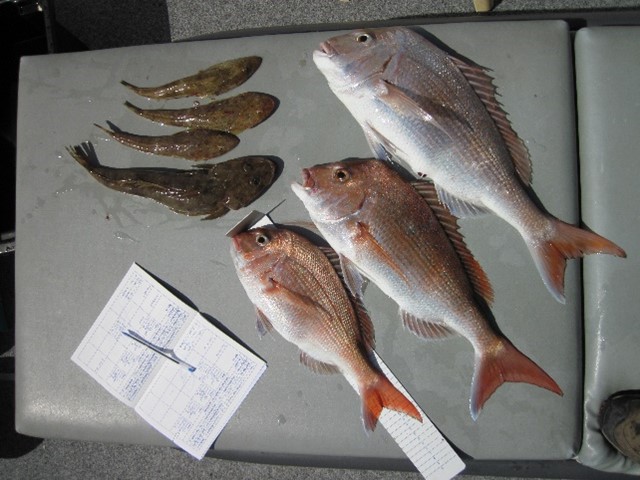
The Angler Diary Program is designed to be flexible, encouraging volunteers to follow their typical fishing interests (General Angler Diarists, GAD). However, some anglers go beyond their typical angling habits and conduct more scientific fishing using prescribed gear and set locations (Research Angler Diarists, RAD).
Both general and research angler diary methods require fishers to record data including:
- Time spent fishing
- Fishing location
- Species targeted and caught
- Fish lengths
- Number of rods
- Bait and hook type/sizes used
General anglers have room for plenty of flexibility in their fishing practices, and are solely asked to record the information listed above, with the aim being to get information from the anglers normal fishing practices with minimal inconvenience. There are no requirements to target selected species, use specific gear or fish specific areas. Just by anglers recording this key information we can determine trends in fish catch rates, fish abundance and how fish are moving and growing in a population.
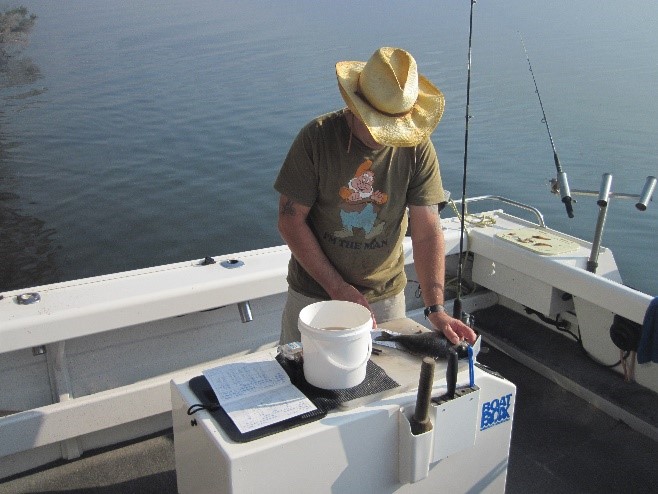
Research anglers are more restricted in their fishing practices, being required to target selected species, and alter their fishing techniques to catch the largest possible size range of the selected species, both above and below the legal minimum limit (LML). The data obtained from research anglers provides accurate information on catch rates, length and age structure of the population, the relative strength of successive year classes, and patterns of recruitment to the fishery. Catch rates from the RAD method provide less biased indices of relative abundance which makes them more reliable as a stock performance indicator.
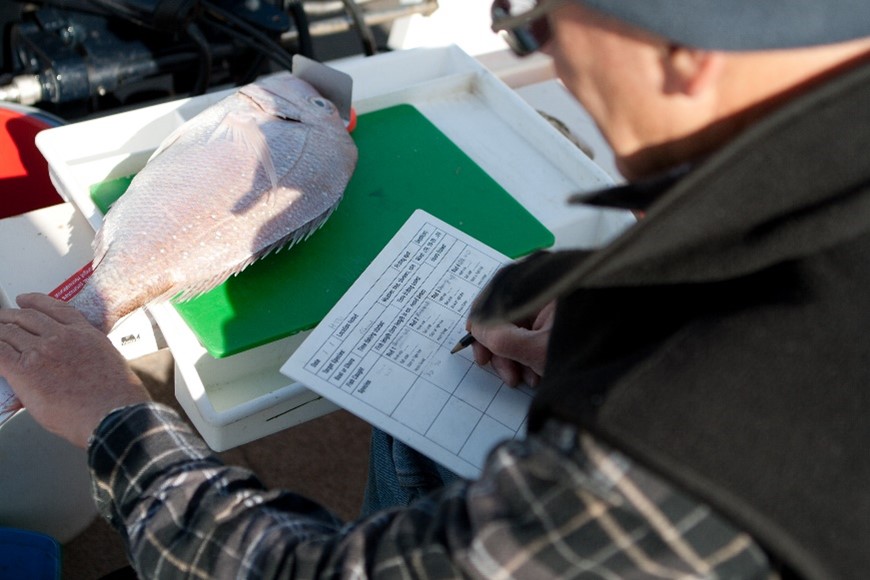
Angler diarists are equipped with special diaries and rulers to aid them in recording information about their catch.
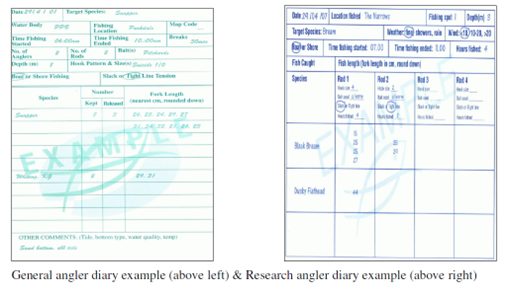
The Gippsland Lakes black bream stock is a fish stock that heavily relies on the Angler Diary and Creel Survey programs for monitoring. These figures from the most recent stock assessment demonstrate how the data collected from these programs provides an insight into fishery sustainability and management.
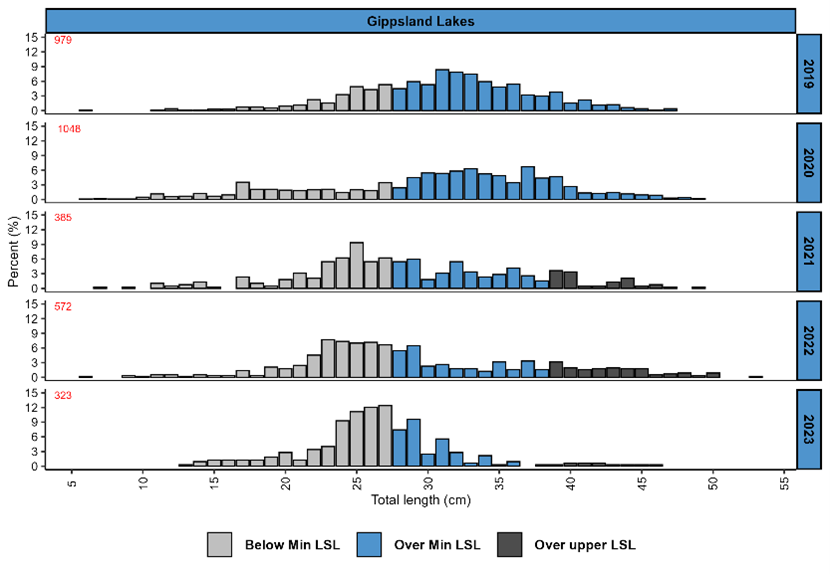
Figure 1: Frequency histograms of Gippsland Lakes black bream length composition from diary anglers for calendar years 2019–2023. Red numbers indicate numbers of fish measured.
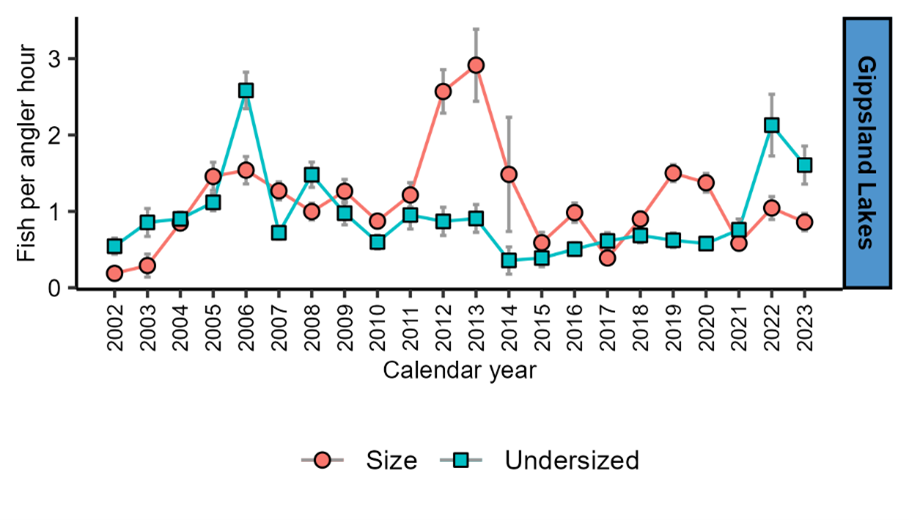
Figure 2: Diary angler mean nominal (±SE) catch-per-unit-effort (CPUE) of black bream from the Gippsland Lakes, 2002-2023 calendar years.
Figure 1 demonstrates how the data collected from these programs can be utilised to form a picture of the length structure of the population, which can be then used to inform management decisions regarding legislation such as size and bag limits in order to maintain a sustainable fishery into the future.
Figure 2 is an example of how Angler Diary data is utilised as a measure of fish abundance in a population. By studying the relationship between fishing effort and catch, the abundance of fish in the population can be determined and used as an indicator of how healthy a fishery is at that point in time. The proportions of size and undersize fish in a population can also give indication as to how successful recent spawning and recruitment events have been.
Without the data collected from the Gippsland Lake community science programs, we would be significantly lacking knowledge the regarding the health and status of the fishery, and would not be able to make informed decisions when managing the stock. Anglers who support these projects can rest assured that their contribution to this research is helping ensure the sustainability of their fishery into the future.
Get involved
If you would like to get involved or need a new diary, contact angler.diary@vfa.vic.gov.au.
The Angler Diary Program is funded by the Victorian Fisheries Authority and Recreational Fishing Licence revenue.
